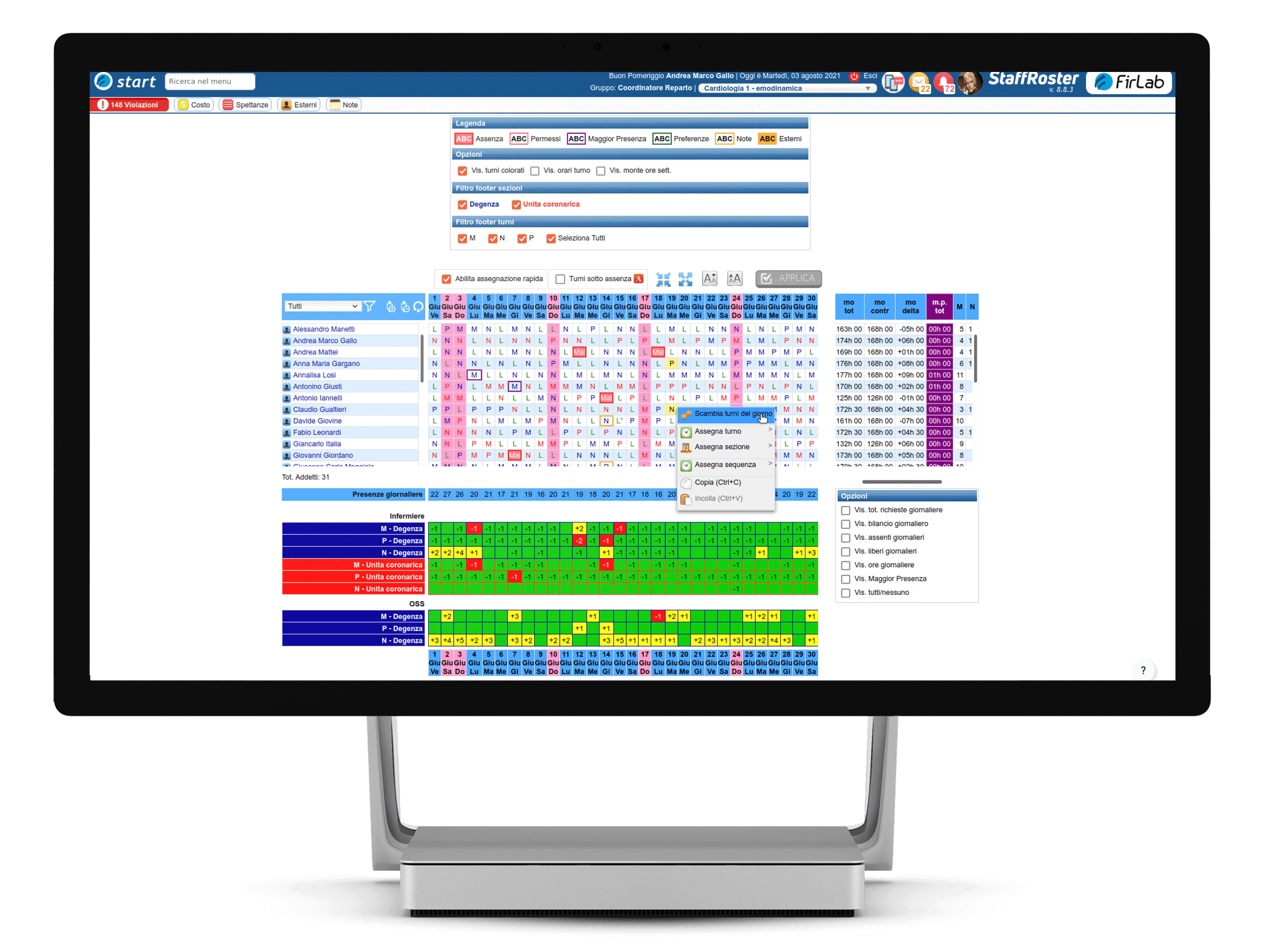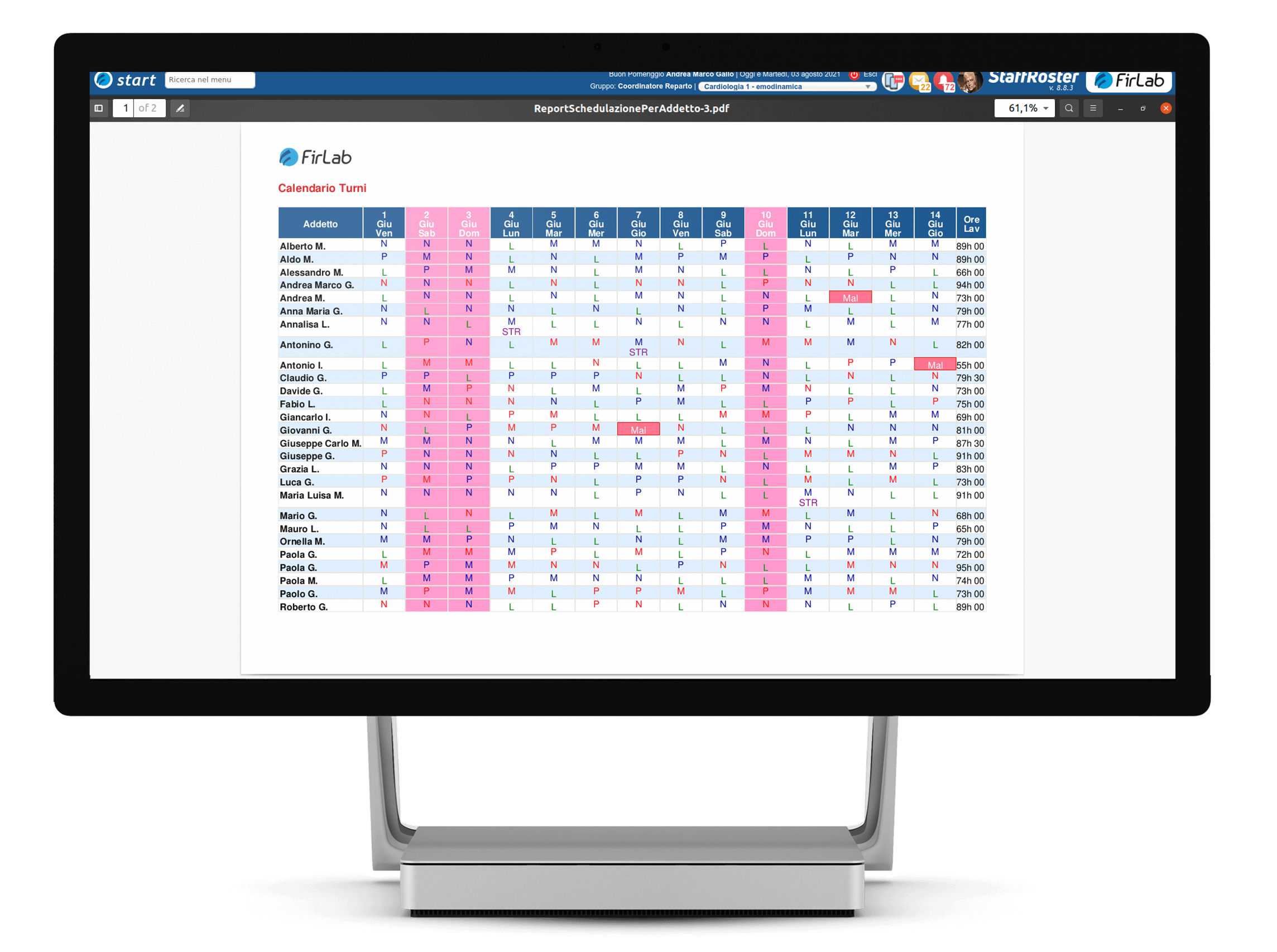Healthcare
Hospitals, clinics, nursing homes and retirement homes, emergency and urgent care facilities – the healthcare sector is one of the areas where avoiding overtime and overtime shifts is more vital than ever, for the well-being of patients and also workers.
Cut down on overtime and avoid uncovered shifts by optimizing available healthcare staff.
Unfortunately, it is no mystery that the healthcare sector is currently going through a very difficult time. Funding cuts have inevitably resulted in consequent cuts in personnel, which in turn weigh on the organization of healthcare facilities.
However, now more than ever, healthcare plays a crucial role in modern society: planning shifts correctly in the healthcare sector means protecting the wellbeing of both patients and healthcare staff, saving money and enabling facilities to deal with any situation, including emergencies.


An automated software for the planning of shifts in healthcare facilities, with specific features able to meet their particular needs, is essential to achieving the goal of providing quality patient care, without burdening workers, already stressed by staff shortages that often force them to work overtime and double shifts.
With StaffRoster you can say goodbye to all of this, thanks to features dedicated to Healthcare:
- Management of operating units, including complex ones such as emergency rooms and operating theatres
- Using employee preferences to create particularly critical shifts such as night shifts
- Replicable shift patterns, such as fifth shifts or particular sequences, including the use of work teams
- Planning activities for themanagement of external servicessuch as the transportation of patients and home visits
- Personnel planning using pre-established shift schedules
- Management of shift exchanges between employees
- Planning holiday plan
- Printing and reportingof aggregated information
With these tools and features, StaffRoster enables:
- a correctidentification of the need for personnel in the various departments, taking into account the specific qualifications, with the consequent significant reduction of overtime and double shifts
- the selection of personnel with appropriate skills to be allocated to the right place at the right time
- Shift scheduling that respects workers’ preferences and needs as much as possible, reducing conflict and work-related stress in the health care sector